
— Tony O’Kane
Two years after debuting the CX-60 as the vanguard of its push into premium territory, Mazda Australia has now tugged its ambitious medium SUV back towards the mainstream. With the arrival of the four-cylinder petrol G25 engine option to the CX-60 lineup, the range now opens at an enticing $44,240 before on-roads, but does having just 138kW and 250Nm from the ‘new’ 2.5-litre engine and the subtraction of all-wheel drive compromise the CX-60’s appeal? Oddly enough, our first drive of the new base model suggests these alterations actually improve the formula.
The G25 engine option slides well under the price of the existing petrol G40e, diesel D50e, and plug-in hybrid (PHEV) P50e variants, with the new-for-2025 Mazda CX-60 G25 costing exactly $6000 less than an equivalently equipped turbo petrol six-cylinder CX-60 G40e.
Offered in just the bottom three model grades of Pure (a new addition for the CX-60, having just arrived in April 2025), Evolve and Touring, you can’t have the G25 engine in the more opulent GT or Azami spec. The flipside is that the G25 options are remarkably affordable, with the CX-60 G25 Pure priced at just $44,240, the Evolve retailing for $49,240, and the Touring being the most expensive at $52,240. Budget-minded buyers will likely find those very compelling options compared to the mid-spec six-cylinder turbo petrol G40e Touring for $58,240 – let alone the $81,490 P50e Azami PHEV flagship.
For this review, we’re focusing on the entry-level G25 Pure, not just because it’s a new variant for the CX-60 family, but also because it provides a great opportunity to put the core CX-60 experience under the microscope.
Even when the soft-touch dash-pad gets swapped out for a hard plastic textured panel, the instrument display is downgraded from a 12.3-inch LCD to a seven-inch LCD, and the seats are covered with basic black cloth rather than leather, the CX-60’s interior is still a nice place to be. It’s modestly equipped, for sure – the front seats are manually-adjusted, and even the front cupholders lose the retractable cover that’s found in all other grades – but controls are still within easy reach and, unlike a lot of cars in this era, there’s a good number of physical switches, dials and buttons for critical controls such as ventilation and audio.
The materials might be downmarket relative to other variants in the CX-60 range, but the execution is still just as good. Critically, comfort levels aren’t compromised in any great way either. The driver’s seat has plenty of range to accommodate a broad spectrum of body types and sizes, and the driving position is a commanding one.
Some other mid-size offerings have more leg room, but the Pure's second row is nevertheless a comfy place for two adults on long journeys, with a fold-down centre armrest, air vents on the back of the centre console, rear door bins and a pair of USB-C charging outlets adding to the rear seat’s amenity.
Behind the second row (the CX-60 is strictly a five-seater), cargo space measures 570 litres with the rear seats up, or up to 1726 litres with them folded down and luggage stacked to the roof.
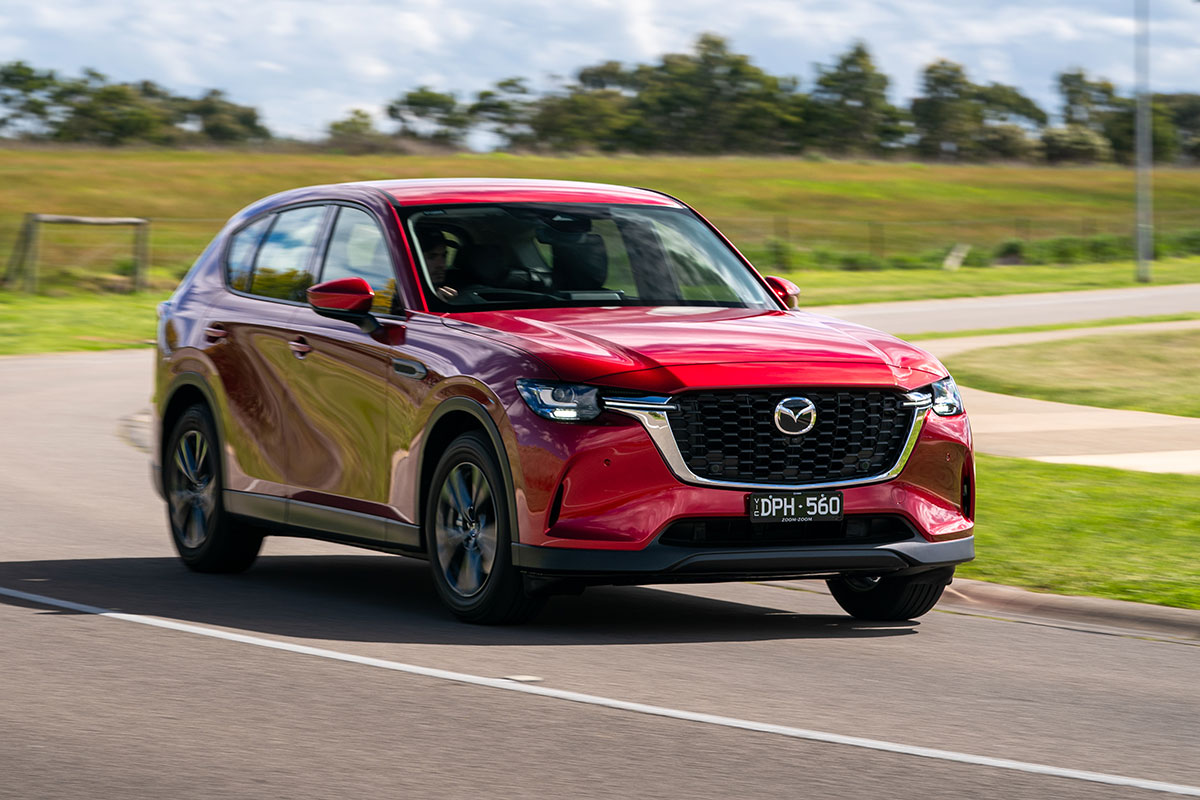
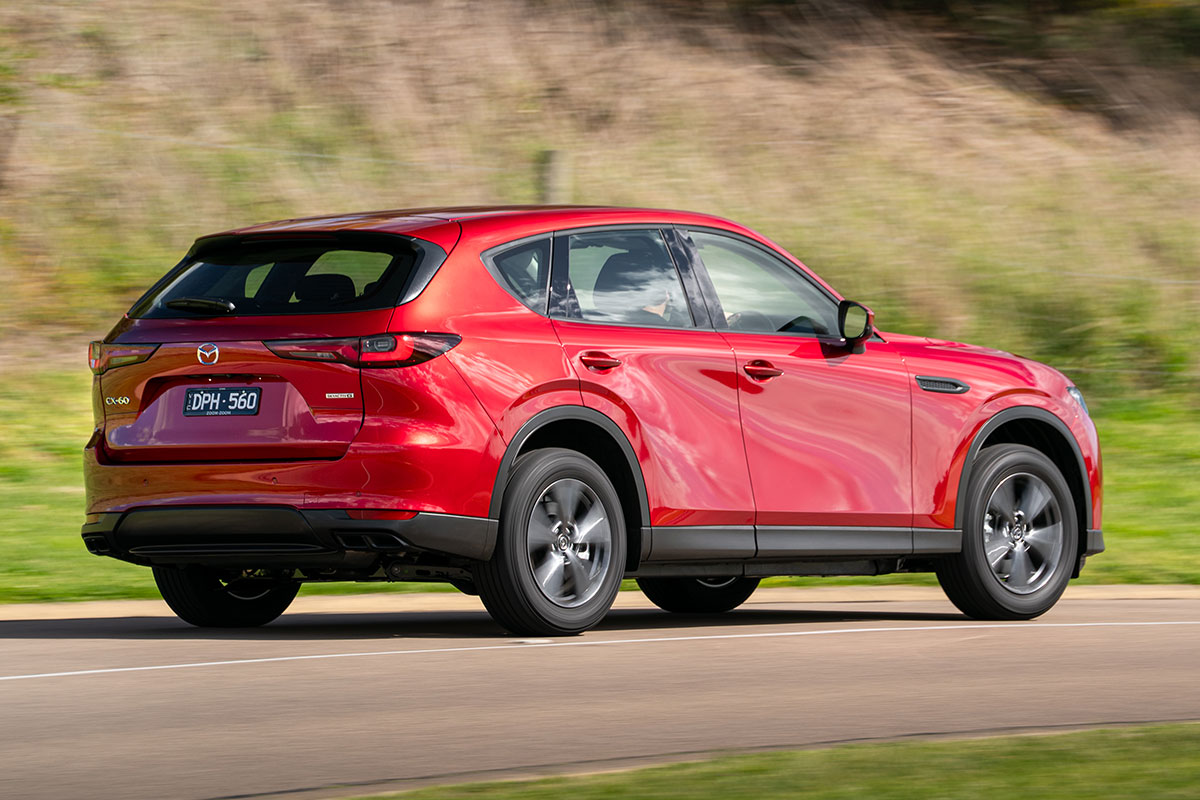
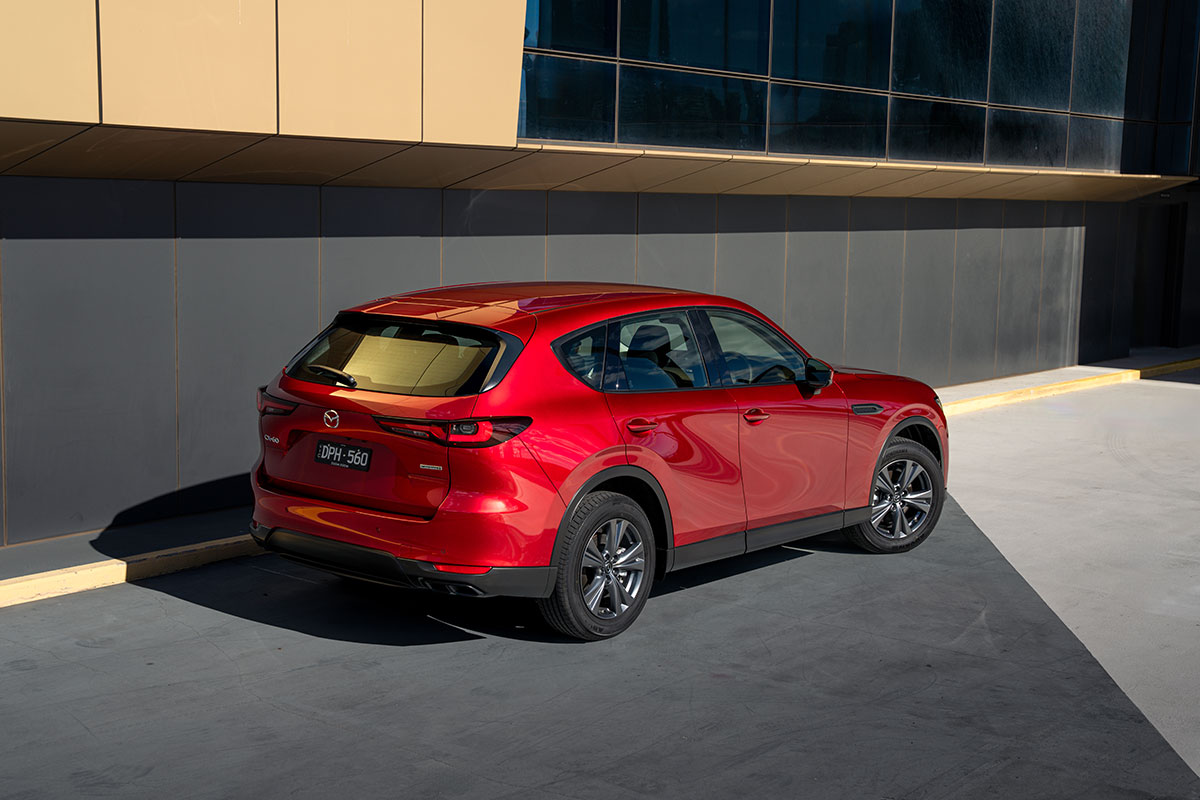
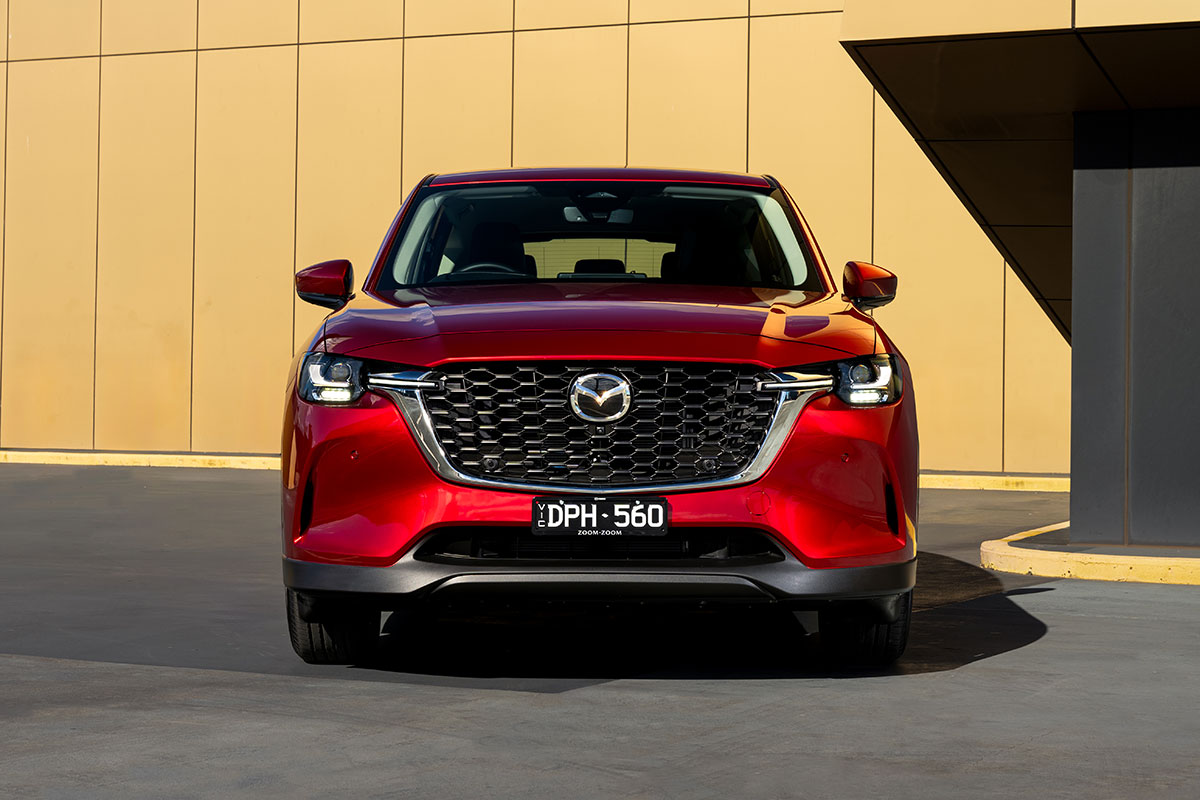
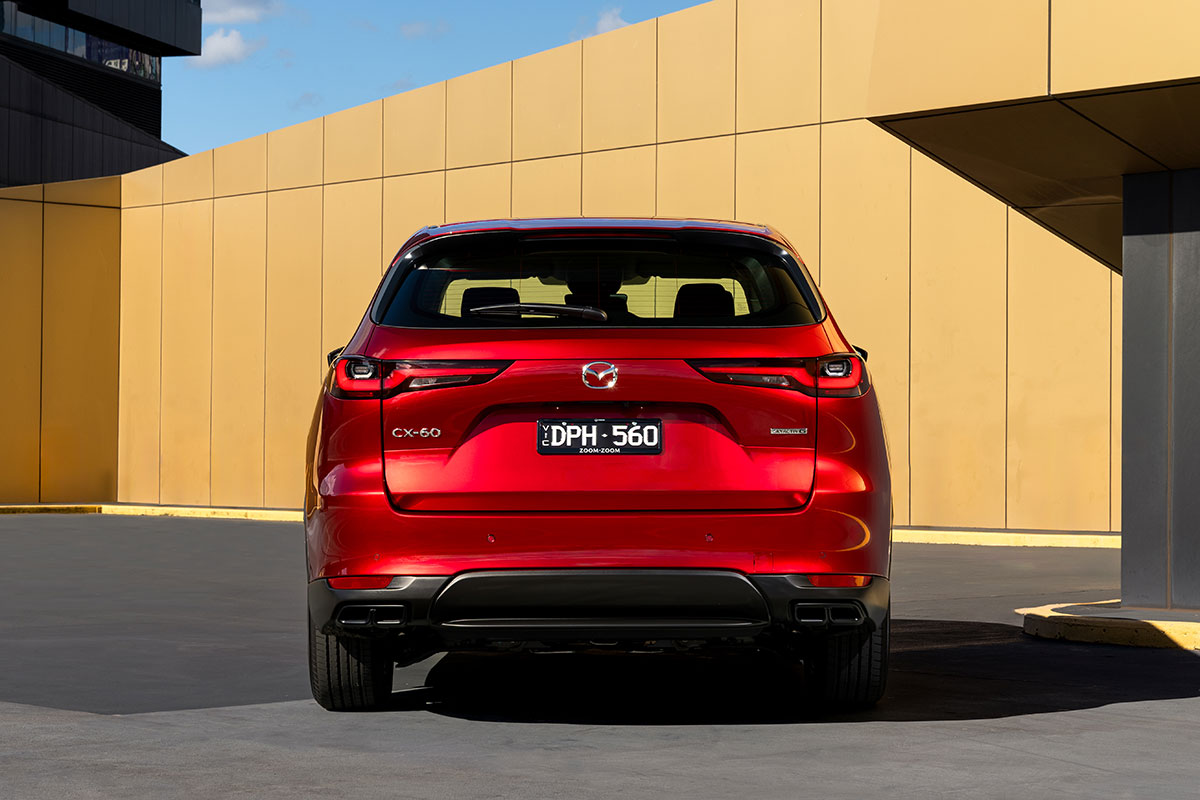
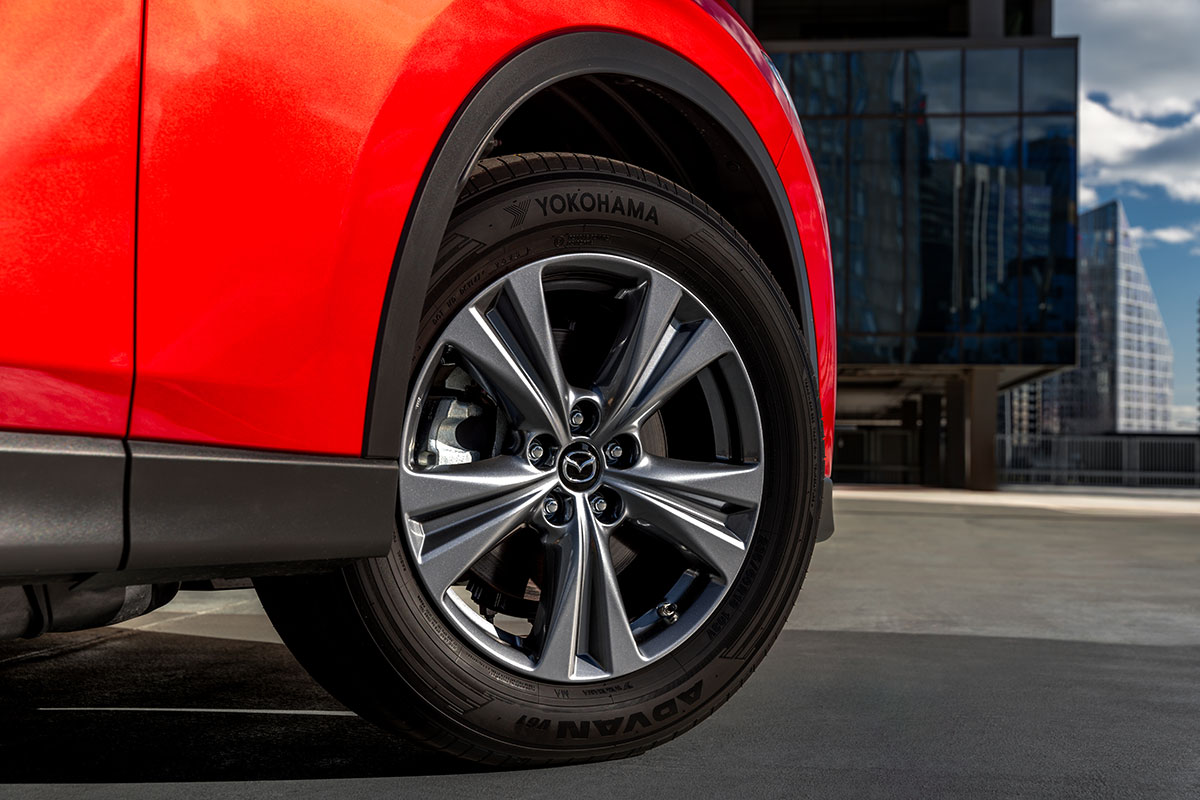
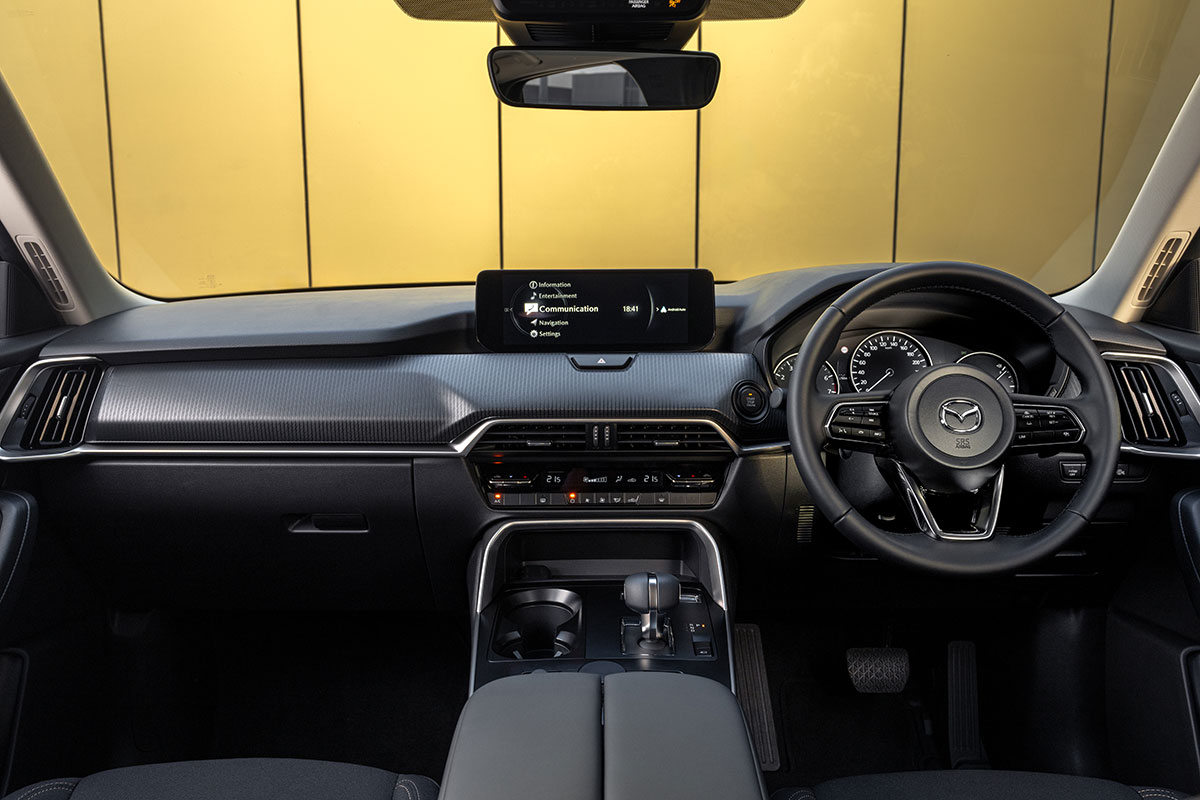
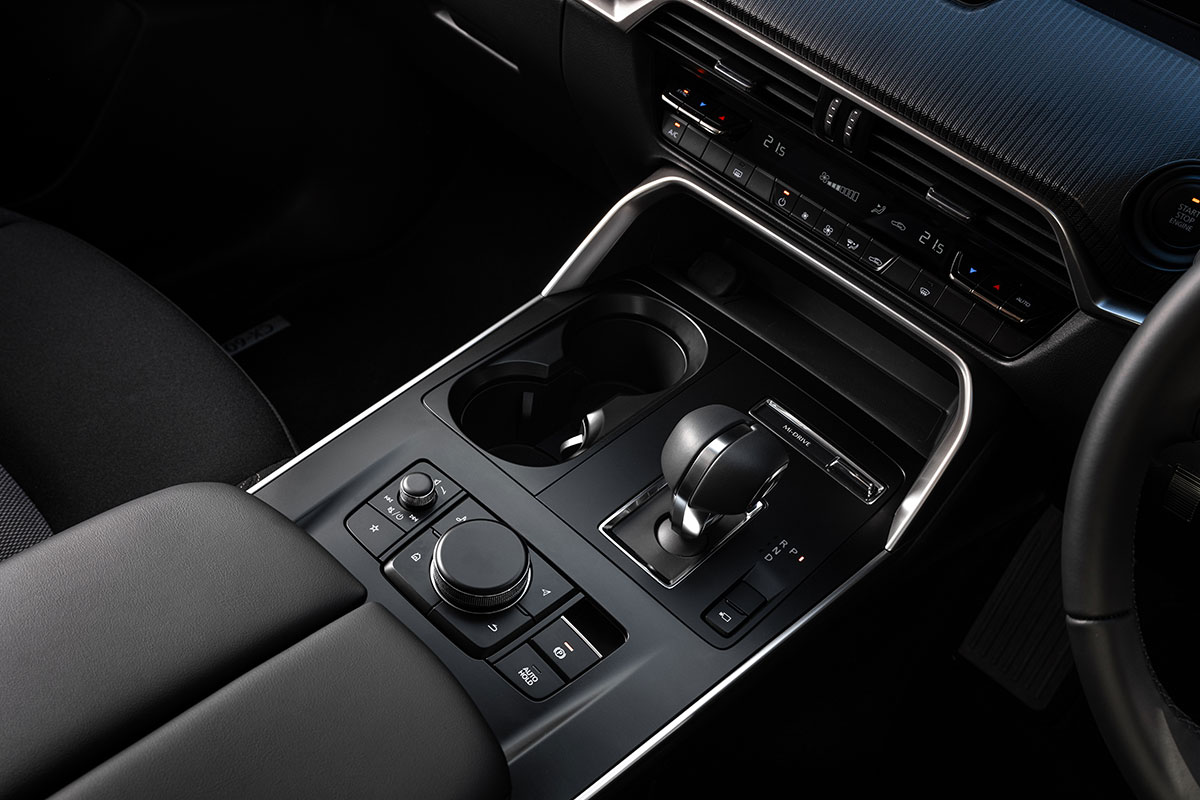
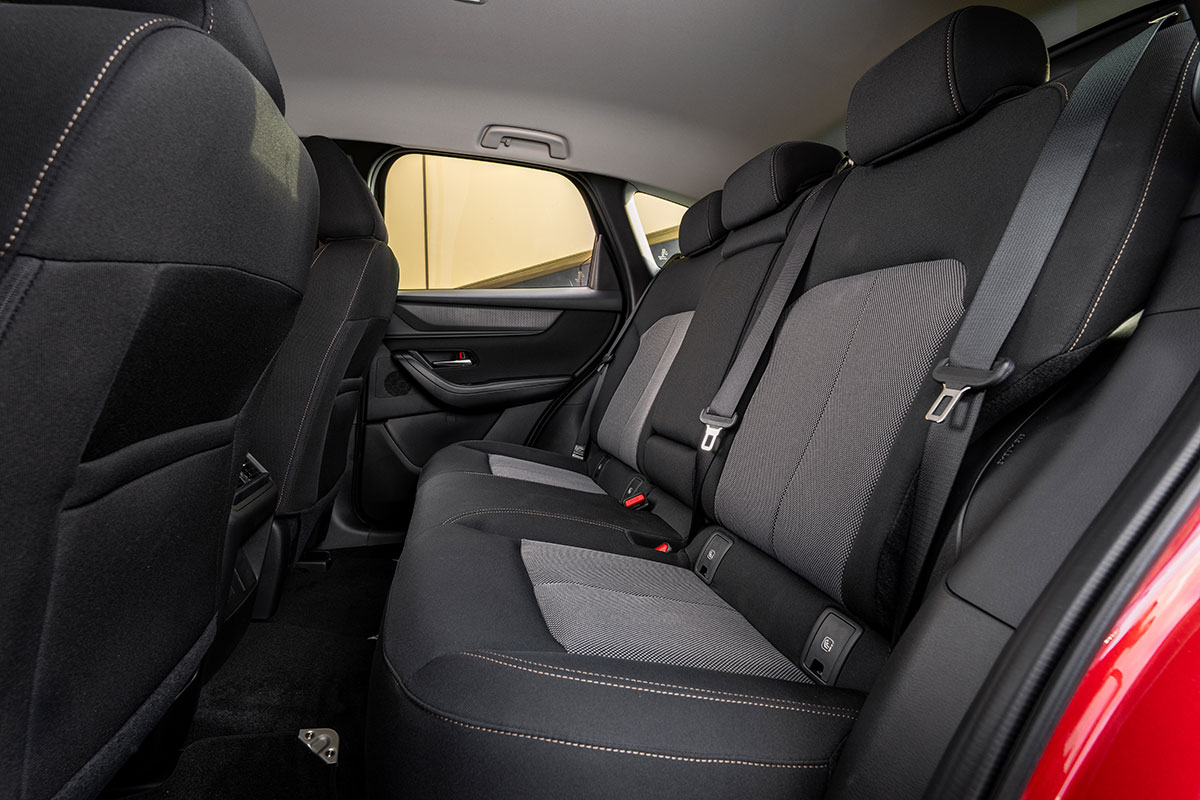
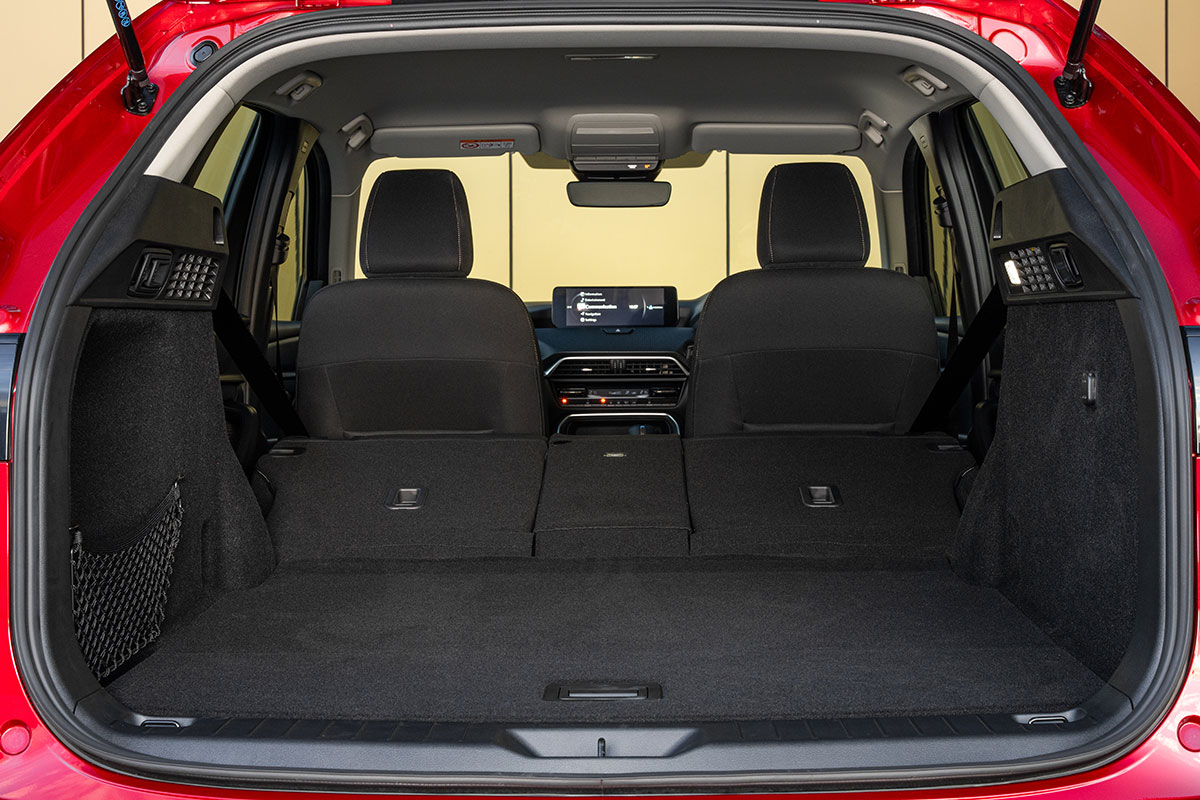
Standard equipment for the Mazda CX-60 G25 Pure includes dual-zone climate control, an eight-speaker audio system with DAB+, a self-dimming rear view mirror, power-folding and heated wing mirrors, cloth seat upholstery, leather trim on the steering wheel and transmission selector, cruise control, LED headlamps and 18-inch alloy wheels.
One area where Mazda could improve the in-car experience is by enabling touch controls for the 10.25-inch infotainment display. The infotainment software itself is fine, and includes built-in sat nav as well as wireless Android Auto and Apple CarPlay phone integration, but having to use the rotary dial on the centre console to control it is a pain when a simple press of a screen would make more sense.
Other absent features that might deter some buyers include no wireless charging pad, no powered tailgate, and no rear 150-watt household power outlet in the G25 – all are available in other grades or engine variants, but not the base model CX-60 G25 Pure.
The Mazda CX-60 was awarded a full five-star ANCAP safety score, although it’s worth noting that that was only for the AWD six-cylinder petrol and diesel models, as well as the PHEV.
Standard safety equipment includes blind-spot monitoring and a 360-degree parking camera, front and rear parking sensors, eight airbags, lane-keeping assistance, autonomous emergency braking, and rear cross traffic alert. There’s provision for up to three child seats across the rear bench, with the outboard seats equipped with Isofix anchorages.
The CX-60’s ‘new’ engine is anything but fresh. Displacing 2.5 litres and producing 138kW at a lofty 6000rpm and 250Nm at 3000rpm, it’s a familiar unit that has also seen service in the CX-5, CX-30, Mazda3 and Mazda6, and is, by modern standards, a little bit behind the times.
There’s no turbocharger and no hybrid assistance, and with a claimed average fuel economy of 7.5L/100km, it’s actually 0.1L/100km thirstier than the powerful 3.3-litre turbo petrol engine that’s further up the CX-60 range.
However, it’s the cheapest engine Mazda can fit to the CX-60, and that’s where its true utility lies. The transmission is the same eight-speed auto that’s used by all other powertrains in the range, with two critical differences: the four-cylinder G25 uses a much shorter differential ratio to help offset its lower torque output, while all drive goes to the rear wheels only, instead of all four like every other CX-60 powertrain.
Overall weight also drops by between 230kg and 410kg as a result – but bear in mind that the G25 is only rated to tow a maximum of 1800kg on a braked trailer, versus the 2500kg of the petrol and PHEV, and 2000kg of the diesel.
With a kerb weight of 1850kg and just 250Nm to move it, you’d think the CX-60 G25 would be a proper slug. It’s certainly far from quick, but the truth is that around town, where most people would be driving, it’s perfectly adequate.
Its shorter differential ratio certainly helps, and while it means the G25 needs to row itself up and down the gears more rapidly than, say, the torquey turbo petrol and diesel inline-sixes, it’s got the right gearing to easily schlep about the city.
The drive route at the launch was fairly tame, however, so we didn’t have the opportunity to properly test its highway credentials or see whether the placement of a lightweight engine in the nose (and the subtraction of a heavy AWD driveline) resulted in a better-handling car, but we did come away feeling that the 2.5-litre naturally-aspirated engine didn’t feel anywhere near as awkward and underpowered as we were expecting.
Even so, the eight-speed auto can be slow to kick down on steeper hills, and speed washes off quickly due to the engine’s lack of torque until a lower gear is selected. There’s also some transmission whine in first gear when accelerating from standstill and, while Mazda has done a suspension re-tune to address early complaints about ride quality, the CX-60 G25 still exhibited some head-toss when driving over lumpy outer-urban roads.
The CX-60 has long felt like a fish out of water in the premium SUV segment, with a high price tag but not quite enough polish to justify it. Curiously, the new base model is the opposite. It’s priced right, looks good, drives well, and delivers pretty much everything most drivers would need in an unpretentious fashion.